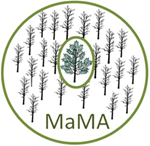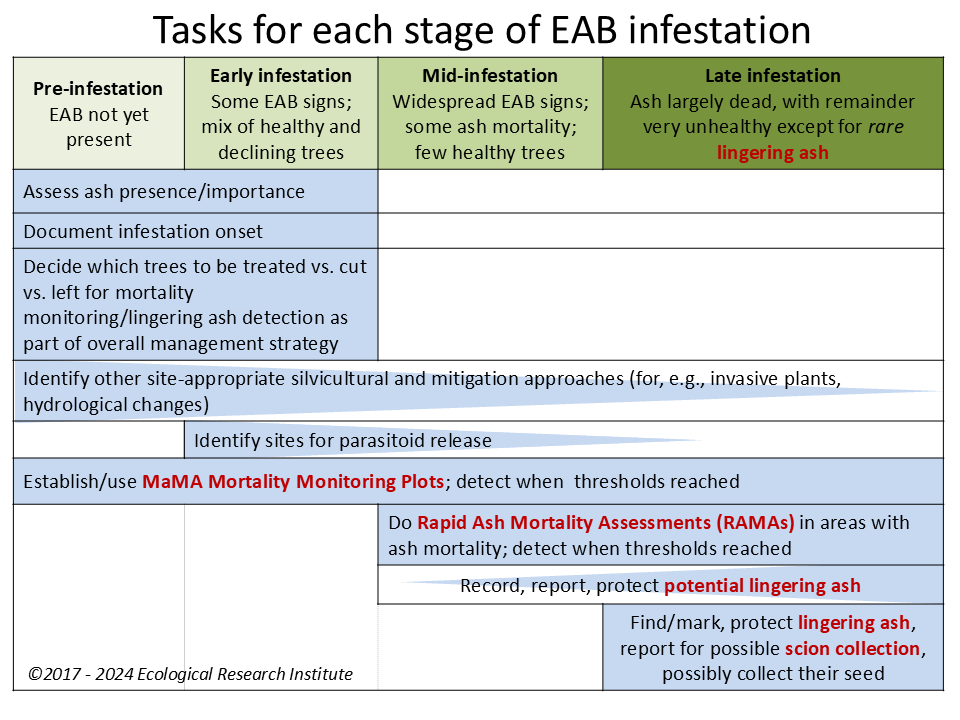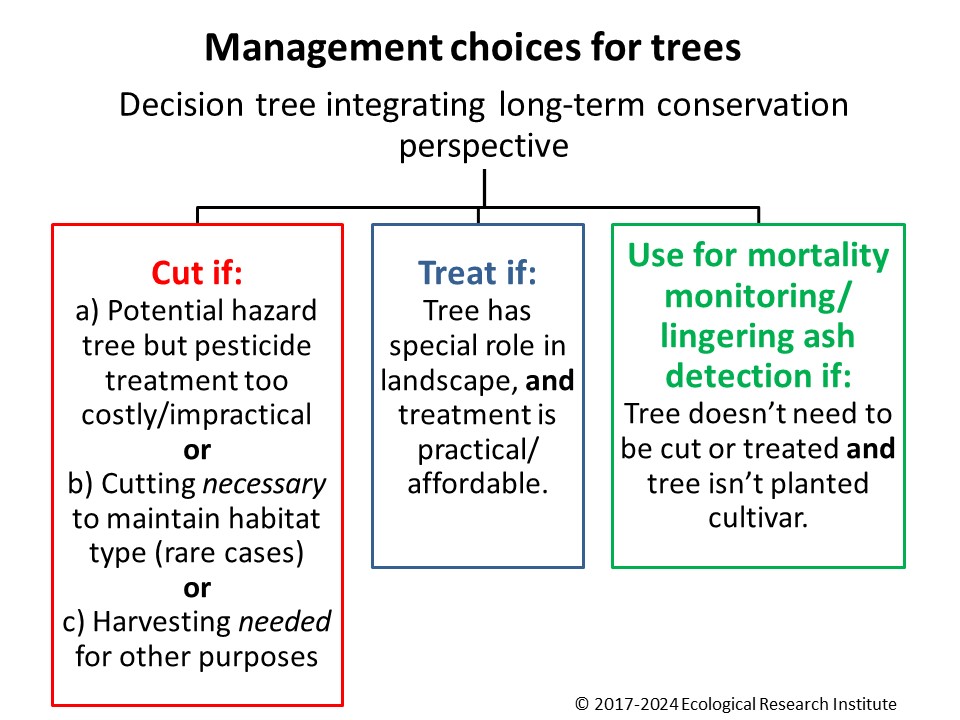Monitoring and Managing Ash (MaMA) is a program developed and directed by the Ecological Research Institute (ERI). MaMA is a comprehensive framework providing steps to be undertaken at each stage of emerald ash borer (EAB) invasion, and even before it, to achieve ash species conservation and EAB mitigation. In addition to providing scientifically-informed guidance for ash management, it includes three citizen-science projects that can lead to finding crucial “lingering ash” (native, naturally occurring trees that stay healthy after nearby ash have overwhelmingly succumbed to EAB). Twig samples (“scion”) taken from these trees can be used via a program of grafting and selective breeding to yield trees with increased EAB resistance, offering the best hope for restoring ash in both natural woodlands and planted landscapes. For more information on the crucial role of lingering ash, see this powerful presentation by the leaders of this research effort, as well as their peer-reviewed scientific paper documenting the relative EAB resistance of lingering ash. MaMA provides updated information on EAB and its management, as well as links to tools that can be used to formulate sound strategies to counter EAB.
The MaMA framework replaces the progression of hopelessness that typically characterizes EAB invasion with particular, constructive actions appropriate to each stage of EAB infestation (including pre-infestation), as shown in the following chart:
This chart (Rosenthal & Wildova unpubl.) shows that that there are important tasks to be done in areas long invaded, as well as places where EAB has not yet appeared (see map of current EAB distribution). If you are in an area for which there is already a MaMA Action Map available, you can use the map to determine which steps are prioritized for your location.
Crucially, MaMA integrates a long-term ash-conservation perspective into local decision-making, so that managers can consider not only measures to mitigate EAB damage to their ash stands, but also steps that can be taken to help preserve the species. This is shown in the following simplified decision schema (Rosenthal & Wildova unpubl.) that considers three possible options for the management of ash trees, each of which can be appropriate depending on goals and circumstances. Although setting aside trees for mortality monitoring (assessing changes in percentages of dead trees, so that reaching particular mortality thresholds can trigger the search for lingering ash) or for lingering ash detection (searching for these trees once the mortality threshold is reached) might not provide an immediate local benefit, it can be essential to preserving ash species over their ranges.
Important message – Before cutting healthy ash trees, make sure it’s for a good reason.
Although there are legitimate reasons to cut even healthy ash trees (as shown in the decision schema), cutting healthy ash trees does not slow mortality in the remaining trees nor does it slow the spread of EAB. In fact, it has the opposite effects, both increasing local ash mortality1 and likely increasing the spread rate when EAB have to travel farther in search of live ash2. Therefore, we strongly implore land managers not to cut healthy ash for the purpose of reducing mortality or EAB spread, as this approach is counterproductive.
Moreover, each healthy ash tree in the forest has the potential to be a lingering ash harboring EAB resistance, and even if only one in one thousand ash trees is a lingering ash, given the over one billion ash trees in the Northeast alone, this translates into a lot of hope for finding such trees. However, each healthy tree cut down without a good reason needlessly diminishes that hope.
Projects for citizen scientists and land managers
To both enable lingering ash detection and provide a clearer, real-time picture of the spread of EAB and its impacts, MaMA relies upon public participation in the following three projects on the Anecdata.org platform, each of which can be joined without joining the other two:
MaMA Ash/EAB Surveys: Participants report basic information about ash presence and EAB infestation status (which can be done in several minutes). You don’t need to be able distinguish between different species of ash – you only need to recognize ash trees in general. You can participate in this project using naturally occurring trees or planted cultivars (e.g., street trees). Just make sure to familiarize yourself with the project’s instructions/training materials before joining it.
MaMA Monitoring Plot Network: Participants designate some naturally occurring, native ash trees to monitor for EAB-induced mortality. Its results are used to determine when the nearby area is eligible to be searched for lingering ash and also reveal spatial variation in survival rates – with this information having important management implications. You can set up monitoring plots at any stage in EAB invasion – even before EAB has arrived in your area. To participate in this project, you’ll typically need to first attend one of ERI’s training workshops (although exceptions might be possible). To arrange for or find out about a workshop near you, email us at outreach@monitoringash.org
MaMA Lingering Ash Search: Participants report naturally occurring, native ash that are still completely healthy after particular mortality thresholds have been reached so that scion can potentially be collected from them for use in a resistance breeding program. You should use this project to report actual lingering ash (healthy trees found in an area after, based upon reaching a mortality threshold, the area has been deemed ready to be searched for them). To see which areas are ready to be searched for lingering ash, see current Lingering Ash Search Zones. However, you should also report “potential lingering ash” – trees that are still healthy when most of the ash in the area are dead or dying, even before the relevant mortality thresholds have been met. We will let you know when the threshold has been met and ask you to check to see whether the tree is still healthy – if it is, it will then be a lingering ash. For both potential and actual lingering ash it is important not only to report them but also to protect them from being cut down as long as they are healthy.
Literature
- Knight, K. S., Brown, J. P., Long, R. P. 2013. Factors affecting the survival of ash (Fraxinus spp.) trees infested by emerald ash borer (Agrilus planipennis). Biological Invasions, 15: 371-383.
- Mercader, R. J., Siegert, N. W., Liebhold, A. M., McCullough, D. G. 2011. Influence of foraging behavior and host spatial distribution on the localized spread of the emerald ash borer, Agrilus planipennis. Population Ecology, 53 (2) 271–285.



